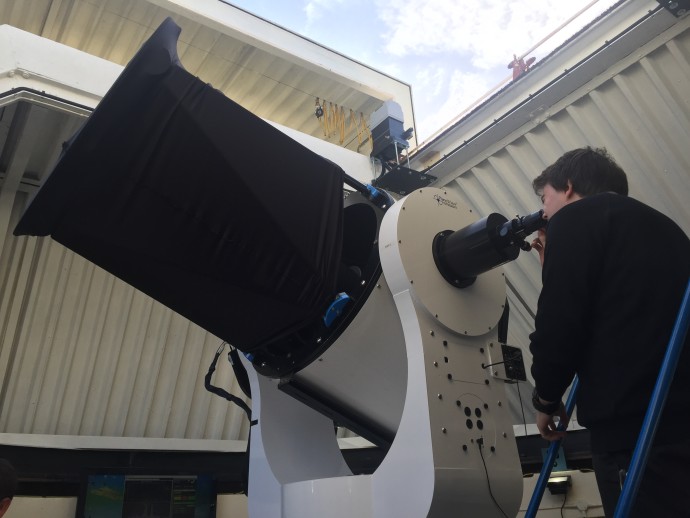
On 8th March 2017, myself and 44 other Physics students took a trip to Alston Observatory in Longridge to further our understanding of the Astrophysics module that we are taking as our optional module at A2. Having just recently started the module we have already begun our study of telescopes and the theory behind how refracting and reflecting telescopes are constructed to produce a magnified image of distant objects. At Alston, we got to see both kinds of optical telescope first hand.
Firstly, we visited the Wilfred Hall Telescope, which is a refracting telescope built in 1894 and which would have cost the equivalent of £250,000 by today’s standards. The telescope has a 15-inch objective lens. However most refracting telescopes aren’t as capable of making new discoveries as reflecting telescopes due to factors such as chromatic aberration which leads to distorted images as different wavelengths of light are separated, as well as lens sag, which causes the lens to deform under its own weight when a large, heavy lens is used; this leads to spherical aberration and light passing through the lens is not brought into focus.
These issues are what caused larger telescopes to be superseded by reflecting telescopes. For example, the 0.7m Moses Holden reflecting telescope has a larger objective diameter capable of giving it a resolving power 3 times better than that of the Wilfred Hall telescope. Furthermore, the mounting and enclosure of the Moses Holden telescope is much smaller than that of the Wilfred Hall telescope, making the installation of new computer controlled reflecting telescopes much cheaper than that of equatorial mounted refracting telescopes.
Prior to visiting the telescopes, we listened to a short lecture by Dr Mark Norris on the current development of new telescopes and their capabilities, as well as reviewing the telescopes current researchers use to make observations of our universe. This includes the Large Binocular Telescope (LBT) which is ground based and uses a complex piston system to counteract distortion of light in the atmosphere and produce an image with a higher resolution than that of the satellite Hubble Space Telescope; the mechanics of which sounded completely mind-blowing to me.
I believe this visit solidified my understanding of the differences between reflecting and refracting telescopes. Additionally, the view in the planetarium gave me an insight into an area I previously had little knowledge about, that being our local constellations and nearby galaxies.
I’m really pleased I visited the Alston Observatory. It was fascinating and provided a valuable insight into this area of Astrophysics.
Ronan Smith
Year 13



Comments are closed.